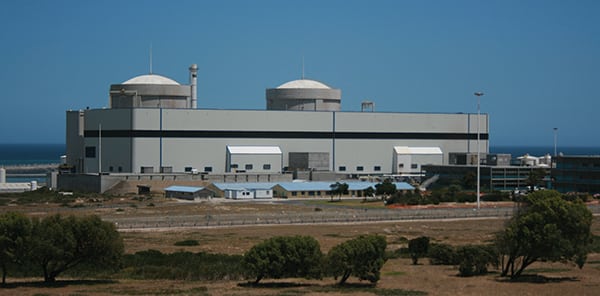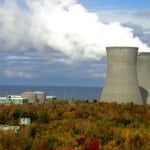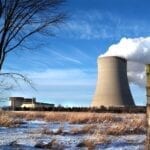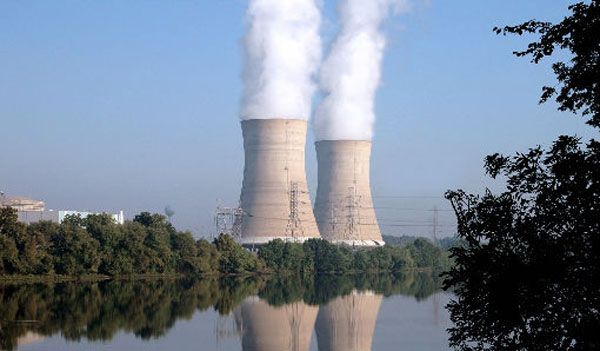Recent developments in nuclear power reveal a common theme: Uncertainty and unpredictability prevail. Many different nuclear industries are developing within and among the nations of the world, all with differing prospects.
Shamelessly adapting the great British novelist Charles Dickens, for the global nuclear industry, it is the best of times, it is the worst of times; it is the age of wisdom, it is the age of foolishness; it is the epoch of belief, it is the epoch of incredulity; it is the season of light, it is the season of darkness; it is the spring of hope, it is the winter of despair.
Globally, the nuclear power business often seems befuddling, head-scratching, mind-numbing. It’s up, it’s down, it’s all around. Atomic energy today is not a tale of one or two more or less coherent industries, but of multiple sellers and multiple buyers and multiple sources of finance in various countries, with markets ranging from freely competitive to private monopolies to state-owned and often state-run enterprises. All these are sometimes intertwined.
Business Model Matters for the U.S. Nuclear Industry
Let’s start with the U.S., the largest nuclear energy producer in the world, and a tale of two markets (although the federal government’s Tennessee Valley Authority has a third position). Some U.S. nuclear power plants compete in wholesale markets, now serving about half of the U.S. population. These nuclear plants bid their power into auctions against coal, gas, and renewables for the privilege to supply power and be paid for the work.
That market isn’t working well for the nukes. Witness Entergy (see “Entergy Sheds Uneconomic Merchant Nuclear Plants to Focus on Regulated Business” in this issue), which made a major foray into merchant nuclear plants in the 1990s, only to see the economics undercut by low-cost gas and subsidized renewables, mostly wind. As the annual Platts nuclear energy conference in Washington was under way in February, New Orleans–based Entergy Corp. reported it had gone from $971 million in profits for 2014 to a stunning loss of $177 million in 2015.
Entergy’s red ink bloodbath was due to its inability to sell power from nuclear plants in competitive markets in New York and New England. The company announced in late 2015 that it would close the Pilgrim nuclear plant in Massachusetts and the FitzPatrick plant in upstate New York. Entergy will close Pilgrim in mid-2019 and FitzPatrick in mid-2017. Entergy shut down its Vermont Yankee plant at the end of 2014.
Discussing the company’s decision to shutter two more nuclear plants, Entergy CEO Leo Denault said, “Closing Pilgrim and FitzPatrick was not the path we wanted to take. After pursuing many alternatives, they ultimately were the only options remaining for us.” In contrast, Entergy’s five nuclear units in regulated monopoly markets in the middle south are doing quite well financially.
A flip side is Southern Company, eschewing competitive markets, hewing to state-regulated cost-of-service rates for its nuclear units. Southern utility Georgia Power is building two new, 1,100-MW Westinghouse pressurized water reactors at its existing Vogtle two-unit station (Figure 1). Although the construction project is running over budget and behind schedule, the company is convinced it will turn out to be a good deal for itself and its customers.
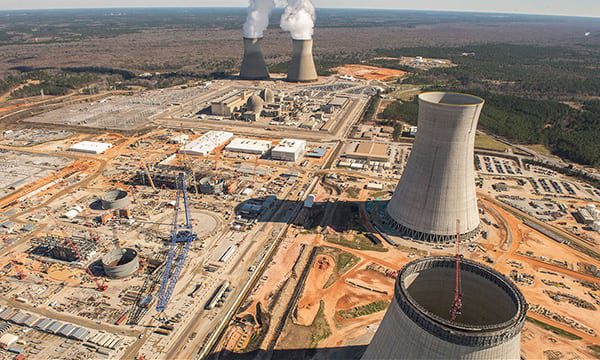 |
|
1. Nuclear on the rise. This January 2016 aerial view shows the construction site for Plant Vogtle Units 3 and 4, with Units 1 and 2 in the background. Courtesy: Georgia Power Co. |
Stan Wise, chairman of the Georgia Public Service Commission (PSC), told the Platts meeting that the new Vogtle units will be a win for the state’s consumers, avoiding rate shocks that accompanied nuclear units in the 1980s. He praised the independent Vogtle construction monitor for a keen eye on the progress and costs of the project. The day after Wise appeared at the Platts meeting, Georgia’s PSC approved recovery of an additional $148 million in costs the company submitted, to which the construction monitor had given a thumbs-up.
According to Georgia Power, “The projected overall peak rate impact of the Vogtle nuclear expansion is significantly less than when the project was certified due to financial and other benefits that we have proactively pursued, and the fuel savings of nuclear.” Wise told the Platts meeting that the overall rate increase to customers for the two new nuclear units—probably coming online in 2019 and 2020—would be 7%. Helping keep that increase low is an $8 billion Department of Energy loan guarantee, which reduces the capital cost of the plant.
Does Georgia Power’s experience—and that of SCANA Corp.’s Summer project in South Carolina, similar to the Vogtle expansion—mean a rebirth of new U.S. nuclear plants? Unlikely, according to many analysts, who point to the still-enormous capital costs of nuclear. Georgia’s Wise, a solid nuclear advocate, demurred when asked at the Platts conference whether the commission would consider additional nuclear units in the Peach State. He said he would prefer to “digest the experience” from Vogtle before considering more nuclear construction.
Morgan Stanley investment banker Anthony Ianno told the Platts meeting he is decidedly “bearish” on new U.S. nuclear. With natural gas prices historically low and showing no signs of increase, capital costs of nuclear five times that of gas-fired generation, and electricity demand increasing slowly, “It’s hard to make a decision to invest in new nuclear. It’s very hard for a CEO to make that decision. It’s easier to say no than to go forward.”
Nuclear’s Fate Depends on Its Nation State
The non-U.S. experience with nuclear power is more complex. A key to whether a country will build new nuclear capacity is often a matter of who will finance extremely expensive plants, under what conditions. Most of the markets, particularly those dominated by state-owned utilities, are far from transparent. Below are a few of the countries where the fate of nuclear power is in flux. (For more nuclear power developments, click the “Nuclear” tab at powermag.com.)
Finland. The experience in the more transparent of those markets has not been encouraging for new investment. Finland’s TVO utility, for example, has had a terrible experience adding a new, French-engineered AREVA EPR pressurized water reactor unit to its existing two-unit Olkiluoto station (Figure 2). The project is now nearly a decade behind schedule and billions of dollars over budget. The project forced AREVA to seek a bailout from its major shareholder, government-owned Electricité de France (EDF).
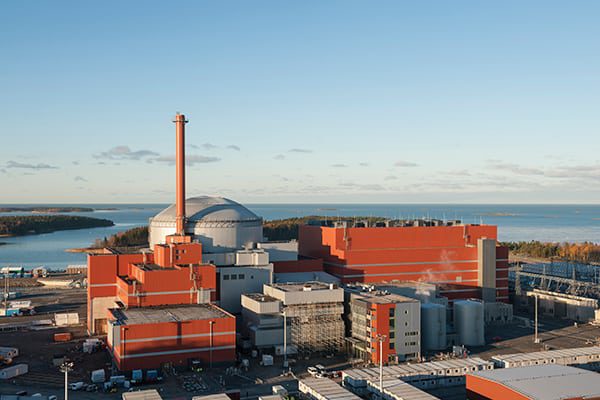 |
|
2. Slow-moving project. The new, third unit at Finland’s Olkiluoto plant, shown here in October 2015, has been dogged by delays, schedule overruns, and contractor disputes. Courtesy: TVO |
On the other hand, Russian state nuclear power agency Rosatom early this year broke ground on a new 1,200-MW plant in northern Finland, partnering with Finnish utility Fennovoima. That project is estimated to cost $9 billion and be in service in 2024. Finland has long had close ties with its neighbor Russia, building Soviet-designed pressurized water reactors, then upgrading them to U.S. safety standards.
France. AREVA has also had serious problems building new nuclear capacity in France. The French government, historically the most bullish of nuclear countries, is scaling back its plans for new nuclear.
Japan. Japan still reels from the March 2011 Fukushima disaster, which forced the country to shut all of its nuclear units. Japan is slowly bringing nuclear back into service, with what the country claims is stricter supervision of the operating utilities.
Germany. Germany, once a leader in civilian nuclear power, is phasing out nuclear. At the time of Fukushima, Germany got 25% of its electricity from 17 reactors. The country announced the phase-out not long after the Japanese catastrophe. According to the World Nuclear Association (WNA), the nuclear market share in Germany had dropped to 16% from eight operating reactors in 2015.
China. China remains dedicated to a nuclear future, driven in part by crippling air pollution from coal use in Chinese cities, including the capital of Beijing. The WNA reports that China has 30 operating reactors, 24 under construction, and more in queue. Whether the severe slowdown in the Chinese economy will slow its nuclear plans is unknown. China has three nuclear firms—China National Nuclear Corp., China General Nuclear Power Group, and State Nuclear Power Technology Corp.—all state-owned.
China, which originally worked with France on nuclear plant design and engineering, is now exporting nuclear technology, competing mostly with Russia’s Rosatom State Nuclear Energy Corp.
South Africa. South Africa announced in February that it plans to add 9,600 MW of nuclear capacity to the two 1970s vintage, 970-MW French reactors at Koeberg (Figure 3), the only nuclear plants on the African continent. President Jacob Zuma said during his annual state-of-the-nation speech on February 13, “Our plan is to introduce 9,600 megawatts of nuclear energy in the next decade in addition to running the Koeberg Nuclear Power Plant.”
China and Russia are expected to be the leading bidders for the work, according to Nigeria’s The News. Rosatom is likely to offer to design, build, and finance the nuclear plant at its own expense, and then charge South Africa for the electric power.
Footing the Bill for Nuclear Power
Financing the capital costs of nuclear stations is a major hurdle for those wanting to build new nuclear capacity, whether in the rich countries of the world or the poor. State-owned nuclear enterprises have an easier financing path and have been the dominant way plants were built in the past. But even state enterprises require access to hard currency to buy the commodities that underpin all power plants, including basics such as steel and concrete and services such as advanced welding, plumbing, construction, and electrical services.
Writing in World Nuclear News earlier this year, Fiona Reilly of PricewaterhouseCoopers outlined six ways to finance nuclear plants, other than traditional government funding:
■ Corporate balance sheet finance. This was typical financing for much of the U.S. fleet but is “really only an option for the largest utilities and developers,” according to Reilly, as the cost of a large nuclear station runs in the vicinity of $20 billion, a “bet-the-company” proposition for many utilities.
■ The French “Exceltium” model. Between 2005 and 2010, industrial investors and banks in France formed “Exceltium,” consortia to contract with EDF, the state-owned electric utility, to finance new plants in return for guarantees of “cheaper electricity from EDF’s portfolio.”
■ The Finnish “Mankala” model. Shareholders in the Mankala, a cooperative consisting of industrialists and utilities, take shares in the power plant. Reilly writes, “The owners of the Mankala are allowed and obliged to purchase electricity from the power plant equal to their shareholding at a cost price. This electricity can then be used by the investors or can be sold into the market.”
■ Vendor equity. “ In the late 2000s,” says Reilly, “it was recognized that reactor technology vendors may be able to support new build projects financially as well as technologically.” Vendor equity “helps to finance a project in return for the vendor’s technology being deployed in the new facility.”
■ Export credit agencies debt and financing. “Non-recourse/limited recourse financing, where the lenders have no/limited recourse to the borrower and the only collateral for the loan is the project itself,” writes Reilly, “is seen as the nirvana of nuclear new-build.” This “dream scenario” is far off.
■ Private financing with government support. This can take various forms, such as a guarantee to support debt coming into a project, as in the U.S. federal loan guarantees to Georgia Power in the Vogtle project, revenue guarantees such as power purchase agreements, or both.
Conditional Optimism
What does the future hold? Given the complexities of the world market, that’s a difficult question. The International Energy Agency in its World Energy Outlook 2014 suggested substantial nuclear power growth through 2040, in the range of 60%. Anyone who has followed energy broadly for the past few decades would view such long-range scenarios skeptically.
More credible is the International Energy Agency’s 2014 statement, cited by the WNA that, “Despite the challenges it currently faces, nuclear power has specific characteristics that underpin the commitment of some countries to maintain it as a future option…. Nuclear plants can contribute to the reliability of the power system where they increase the diversity of power generation technologies in the system. For countries that import energy, it can reduce their dependence on foreign supplies and limit their exposure to fuel price movements in international markets.” ■
—Kennedy Maize is a long-time energy journalist and frequent contributor to POWER.


